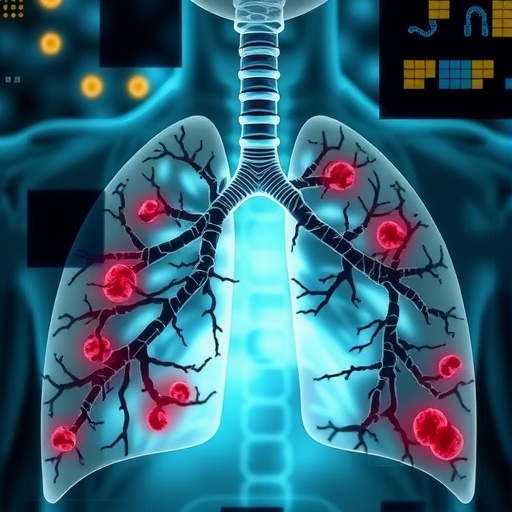ROCHESTER, Minn. — The 33 million people with atrial fibrillation worldwide not only suffer from bothersome symptoms, but also face a fivefold increased risk of stroke and a twofold increased risk of death. Research teams led by Mayo Clinic published three connected studies on Friday, March 15, clarifying the benefits of catheter ablation versus rate- or rhythm-control medications to treat atrial fibrillation.
Two studies published in JAMA describe the results of the Catheter Ablation Versus Antiarrhythmic Drug Therapy for Atrial Fibrillation (CABANA) clinical trial. Read the related news release.
The third study, published in the European Heart Journal, displays how massive amounts of data collected from routine clinical practice can help transform care when put in the hands of researchers. This observational study, conducted in parallel to the CABANA trial, replicated the trial in a real-world patient population and compared the treatments in patients who would have been excluded from the trial.
The research team, led by Peter Noseworthy, M.D., a Mayo Clinic cardiologist, and Xiaoxi Yao, Ph.D., a health services researcher, used the OptumLabs Data Warehouse to examine the records of 183,760 patients with atrial fibrillation. These patients were treated with ablation or medications alone between Aug. 1, 2009, and April 30, 2016, the enrollment period of the CABANA trial. The research team found that ablation was associated with a lower likelihood of patients experiencing one or more of the most serious outcomes: all-cause mortality, stroke, major bleeding and cardiac arrest, although the benefit associated with ablation was smaller in patients who would have been excluded from the trial.
“Our study was completed before the completion of the CABANA trial, with no knowledge of the trial findings,” says Dr. Noseworthy. “This is unique, since most observational studies only replicate clinical trials after the trials are published, which could introduce bias — consciously or unconsciously.”
Big data research
“Clinical trials are the gold standard for evaluating treatment effects, but they have limitations such as strict eligibility criteria, small sample sizes, and cross over between treatment arms,” notes Dr. Yao. “Using observational data, we hope to provide complementary evidence to help clinicians apply the findings to their everyday practice.”
Using a cohort 84 times larger than the trial, this team found that most patients (73.8 percent) in routine practice would have been eligible for the CABANA trial. For these patients, ablation was associated with a 30 percent lower risk of stroke, death, major bleeding or cardiac arrest, compared to the risk when receiving medications alone. This result was similar to a CABANA secondary “per-protocol” analysis that excluded patients who deviated from their randomized treatment. (A per-protocol analysis examines only those participants who completed their assigned treatment.)
“Interestingly, in our study, we simulated the trial primary analysis by artificially creating crossover and found almost identical results as the trial: a 15 percent risk reduction in this study versus 14 percent in the trial,” says Dr. Yao.
“Since the initial release of the CABANA trial findings last year, there have been questions in terms of how to interpret the primary trial result,” she says. “However, using a much larger real-world population, the risk reduction was significant in our study even with crossover between treatment arms.”
In this real-world cohort, 22.4 percent of patients met at least one CABANA exclusion criteria.
“These patients are often poor candidates for ablation, so the risk reduction with ablation that we found was smaller but still significant,” says Dr. Noseworthy.
The remaining 3.8 percent of patients did not meet the trial inclusion criteria.
“These patients are those under 65 years old without any stroke risk factors,” he says. “They could be good candidates for ablation for the purpose of symptom control, but their cardiovascular risk is very low.”
The risk of serious events for patients receiving ablation also appeared to be 30 percent lower in this last group. However, because their overall risk is so small, the reduction was not statistically significant.
Implications for medical practice
The study provides valuable comparative effectiveness data for physicians as they seek to make evidence-based decisions for their patients regarding atrial fibrillation ablation.
“Our study results complement what we have seen in the CABANA trial itself and suggest that ablation may be associated with a lower risk of cardiovascular events than medical therapy alone,” says Dr. Noseworthy. “However, the benefit may be smaller in patients who would have been excluded from the trial. Trial eligibility criteria could serve as a guide for selecting patients who may more likely benefit from ablation for cardiovascular risk reduction.”
“This study also demonstrated that, when conducted rigorously, observational studies can have high internal validity, that is, producing results very similar to clinical trials,” Dr. Yao says. “These large real-world data not only help us interpret the controversial trial findings, but also provide additional evidence for patients who would have been excluded from the trial.”
The research team included these Mayo Clinic experts Bernard Gersh, M.B., Ch.B., D.Phil., Douglas Packer, M.D., and Nilay Shah, Ph.D. The team also included David Kent, M.D., Tufts Medical Center, and Jonathan Piccini, M.D., Duke University Medical Center.
This research was made possible by National Institutes of Health grant R21 HL140205, “Pairing Observational and Patient-Level Clinical Trial Data to Assess Cardiovascular Risk Reduction With Catheter Ablation for Atrial Fibrillation” to Drs. Noseworthy and Yao, and the Mayo Clinic Robert D. and Patricia E. Kern Center for the Science of Health Care Delivery. Center research focuses on transforming clinical practice. Researchers seek to discover new ways to improve health; translate those discoveries into evidence-based, actionable treatments, processes and procedures; and apply this new knowledge to improve patient care.
###
The researchers report any potential conflicts of interest in the paper, which include consulting fees and funding sources during the time period of the study.
About OptumLabs
OptumLabs is a collaborative center for research and innovation co-founded by Optum Inc. and Mayo Clinic, and focused on improving patient care and patient value. The OptumLabs Data Warehouse contains de-identified data from a large U.S. health plan with claims from commercial and Medicare Advantage enrollees, as well as de-identified electronic health record data from a nationwide network of provider groups. The Mayo Clinic Robert D. and Patricia E. Kern Center for the Science of Health Care Delivery, which leads the relationship with OptumLabs for Mayo Clinic, has published a number of studies identifying areas for potential improvements in health care delivery using the OptumLabs Data Warehouse.
About Mayo Clinic
Mayo Clinic is a nonprofit organization committed to clinical practice, education and research, providing expert, comprehensive care to everyone who needs healing. Learn more about Mayo Clinic. Visit the Mayo Clinic News Network.
Media Contact
Elizabeth Zimmermann
[email protected]
https:/




